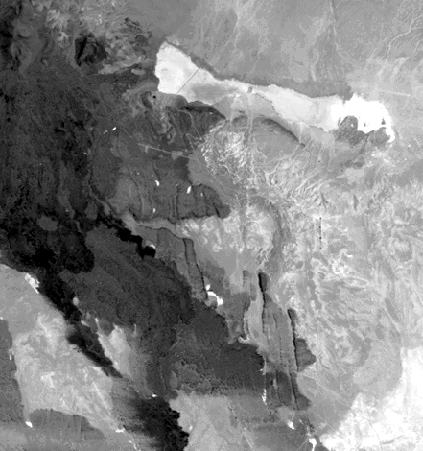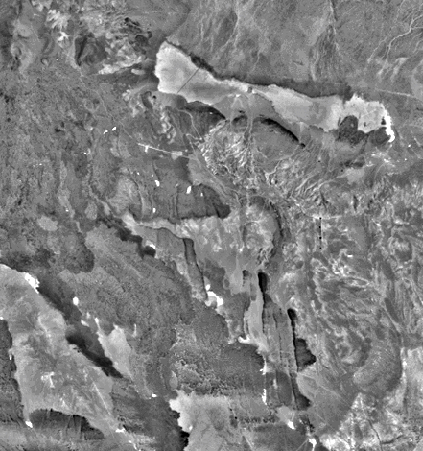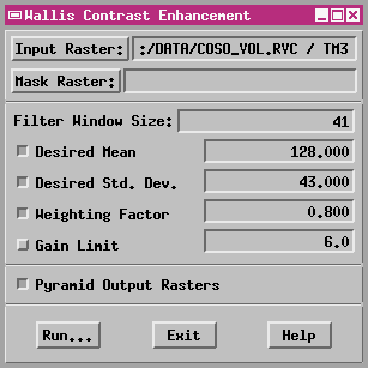Wallis Filter in TNT products V5.5
V5.50 –– October 1996
Locally Adaptive Contrast Enhancement
The Wallis Filter process in TNTmips V5.5 (Interpret / Raster / Filter / Wallis) applies a locally-adaptive (spatially varying) contrast enhancement to a grayscale raster. This filter is designed for grayscale images in which there are significant areas of bright and dark tones. A typical global contrast enhancement (e.g., Linear, Normalized) cannot simultaneously produce good local contrast at both ends of the brightness range. A global contrast stretch designed to provide detail in dark areas will likely saturate the bright areas, and vice versa.
The Wallis Filter adjusts brightness values in local areas so that the local mean and standard deviation match user-specified target values. This enhancement produces good local contrast throughout the image, while reducing the overall contrast between bright and dark areas. The algorithm uses an image-partitioning and interpolation scheme to speed processing of the image. The output raster is a user-controlled weighted average of the Wallis filter output and the original image.
The illustrations on this page compare a normalized contrast stretch with the Wallis filter result for an image with extensive dark lava flows and local very bright salt flats. Significant local features such as fault scarps, bedrock joint patterns, and alluvial fan drainage patterns are much more evident in the Wallis-enhanced image.
Portion of Landsat scene (Band 3, Red) with normalized contrast. Little local detail can be seen in areas with bright salt flats and very dark lava flows:

Same scene with the Wallis filter applied. Contrast is altered to provide a more uniform tone throughout the image, with greatly improved local contrast in bright and dark areas:

Control window for Wallis filter in TNTmips:
